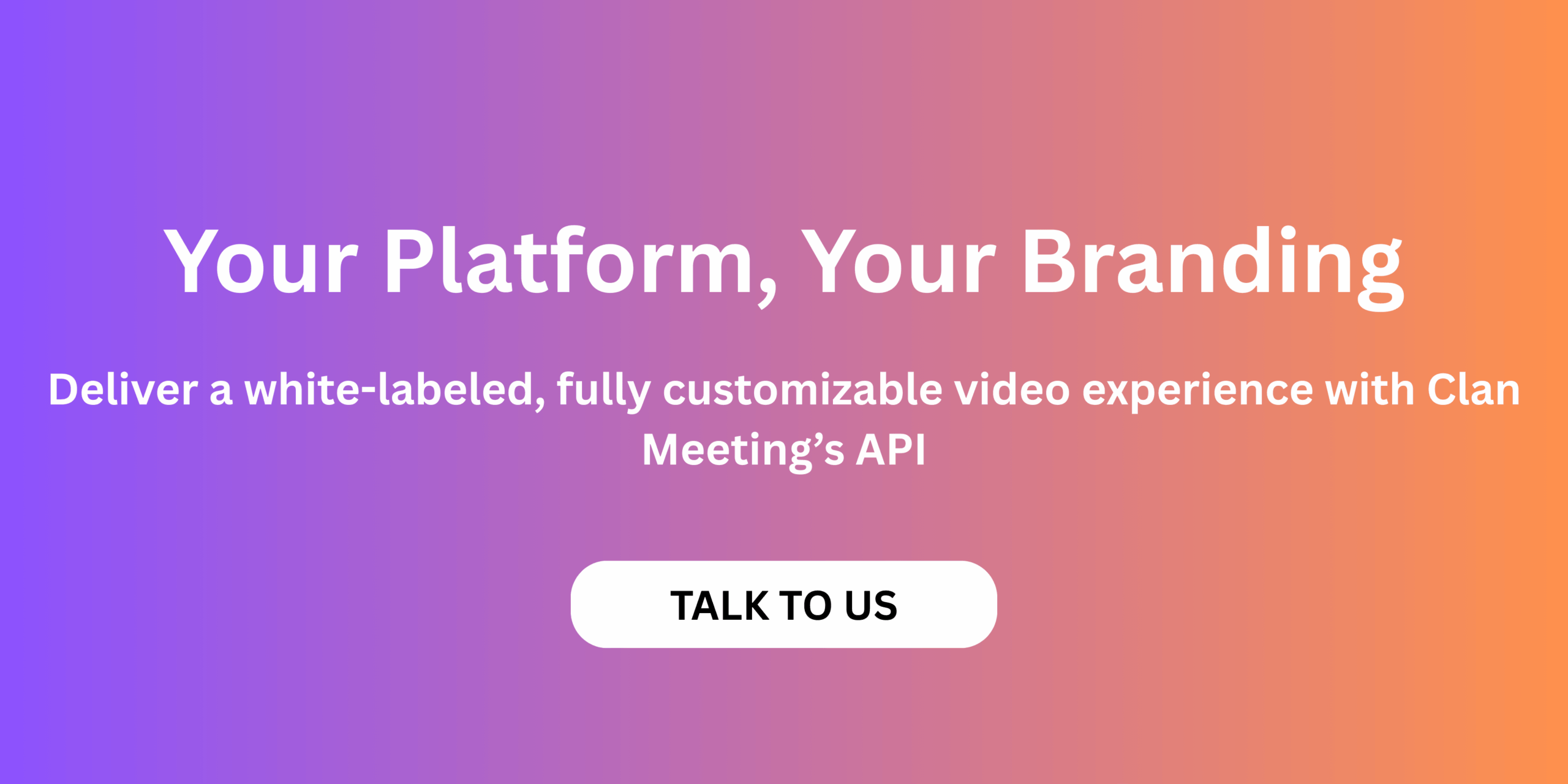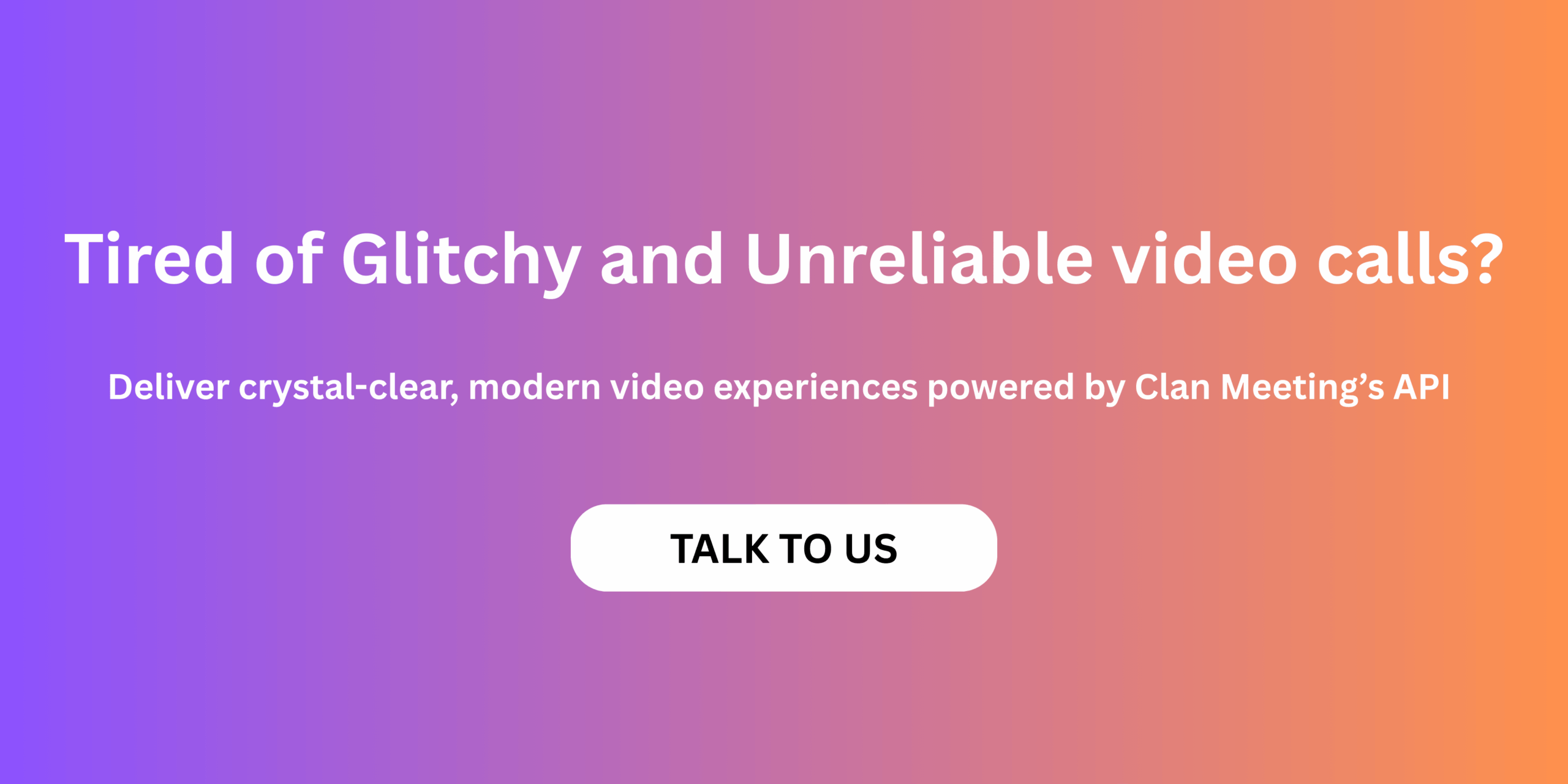Recruitment has undergone a tremendous shift over the past half‑decade.
Remote work, globally distributed talent pools, and compressed hiring timelines have forced HR teams to rethink how they interview and onboard. This has made video, an essential component of the hiring process, from a nice‑to‑have to the core medium for screening, assessment and orientation.
However, the most forward looking platforms now prefer to embed video directly into the hiring workflow to make the whole experience more seamless and scalable rather than sending Zoom links and juggling calendars.
This article goes deep into why combining asynchronous and live video APIs creates flexible, scalable and human‑centric recruitment experiences something that is missing with traditional, standalone video tools.
From Calendar Links to Embedded Video
Traditional hiring relied on phone calls, emails and external meeting apps. However, that approach collapses when you recruit at scale or across time zones.
Research suggests that only about 8.4 % of applicants make it to a scheduled interviews and yet, recruiters spend roughly 42 % of their time coordinating those interviews. (Source)
The pandemic accelerated the need for better tools like never before - while just around 20% of employers used video interviews before COVID‑19, today more than 80% include them in their hiring process. Adoption of dedicated video interview software sits near 60% and companies that implement it cut time‑to‑hire by about one‑third. (Source)
Embedded video transforms this landscape by bringing the conversation into the platform.
Candidates record responses without leaving the site, recruiters watch when convenient, and hiring managers host live sessions inside the same UI. Data such a videos, transcripts and analytics all stays within the system thus ensuring security and compliance which is a very element of and HR platform.
Why Both Async and Live Video Matter
Video in hiring is not a binary choice between on‑demand recordings and live meetings. Each modality addresses different stages and needs.
Asynchronous video (often called one‑way or on‑demand interviewing) lets candidates record answers at their convenience, removing scheduling headaches. Having said that, live video remains important for tasks like panel interviews, technical assessments, culture fit conversations and onboarding.
When both are available, recruiters can design a pipeline that scales while still capturing nuance.
Workflow | Ideal for | API‑driven advantage |
Async video interviews | Large applicant pools, early screening | Record once and review anytime; no scheduling needed |
Live video sessions | Panels, technical tasks, onboarding | Real‑time interaction, screen sharing, recording |
Real‑world platforms highlight the benefit of this dual approach.
Spark Hire reports that customers who adopt one‑way video interviews cut their time‑to‑hire by up to 50%. HiringThing notes that video interviewing tools help nearly half of recruiters speed up hiring, and some companies handle up to 15 000 on‑demand interviews per day.
When asynchronous screening is combined with live sessions, recruiters can move quickly at the top of the funnel and still engage deeply with finalists.
Async Video - Scalable Screening Without Chaos
On‑demand interviews take the back‑and‑forth out of the earliest hiring stages.
Recruiters send a set of questions, candidates record responses on their own devices and submit them when ready. Hiring teams then review videos on their own schedules, score them, and make decisions.
The benefits of this are significant -
- Eliminated scheduling overhead: Recruiters spend roughly 42% of their time scheduling interviews which is significant. Having and automated scheduling system eliminates this overhead and fast tracks the whole process
- Objective evaluations: Everyone answers the same questions in the same format reducing the bias introduced by unscripted conversations
- Broader reach: More applicants can be invited improving the overall candidate funnel
- Flexibility for candidates: Candidates can record when convenient giving them the required flexibility
Technical implementation involves a few key components -
- A recording SDK that runs in browser or mobile apps
- Secure storage and playback APIs for uploading and retrieving videos; and
- A scheduling API to manage invites, reminders and statuses.
Platforms like TestGorilla and Codility integrate these elements to screen thousands of candidates weekly. Evidence suggests that organisations using asynchronous video interviews reduce time‑to‑fill positions by as high as 50%.
Live Video: Human Connection and Collaboration
When recruiters need to see candidates think on their feet or evaluate teamwork, nothing replaces a real‑time conversation.
Panels, whiteboard sessions, pair programming, culture chats and onboarding meetings all require live interaction and embedding live video directly into your platform ensures a seamless experience. There is no switching to a separate app - candidates join with one click, and the session is recorded automatically for compliance or later review.
Live video APIs extend beyond simple calls.
They support screen sharing, shared whiteboards, breakout rooms and integrated chat. Role‑based permissions allow hosts to manage participants and control who can present or share. Adaptive bitrate streaming and low‑latency routing maintain quality even on slow connections.
The same infrastructure powers onboarding and training.
New hires join orientation sessions, meet their teams and receive product demos within the HR platform. With remote work becoming standard, this digital handshake is essential. Live video fosters engagement and builds relationships.
Technical Architecture and Key Considerations
You do not need to build your own real‑time communication stack to deliver these experiences.
A modern video API typically includes -
- A frontend SDK for web and mobile that lets you add components for recording and playing back
- Backend APIs for making sessions, making tokens, and keeping recordings. They take care of authentication, encryption, and moving data.
- Event web hooks that tell your system when a session starts or ends, when someone joins, or when a recording is done
- Integration hooks with calendars, applicant tracking systems (ATS), or customer relationship management (CRM) applications to keep data in sync
However, it is important to select a provider carefully considering the current and the future needs. Here are a few factors to keep in mind -
- Compliance and security - Candidate videos have personal information in them and therefore providers must offer end-to-end encryption for data storage and compliance certifications like GDPR and SOC 2
- Performance - For great user experience, streaming with low latency and variable bitrate are very important.
- Custom branding - You should be able to style the UI to fit your overall branding
- Analytics - Keeping track of engagement and recording analytics helps make decisions faster & better
- Easy integration - Clear documentation and SDKs that makes development faster
- Flexible Pricing - With usage-based pricing, you only pay for what you use leading to significant cost savings
By leveraging a mature API, you can embed both asynchronous and live video with minimal code and focus on building unique features for recruiters and candidates.
Business Impact and ROI
Using video APIs in hiring isn't only a technical advancement - it also adds value to the business -
- Faster time to hire: Companies that use video interviewing platforms recruit people about 35% faster
- Lower costs: Video interviewing helps companies cut their hiring expenditures by three times. With usage-based pricing, costs go up when more people are hired
- Less drop-off: Almost half of candidates drop out of the process when scheduling takes too long. Asynchronous interviews get rid of that problem.
- More varied candidates: 80% of businesses who use virtual interviews say they get a wider range of candidates because video interviews don't limit where or when people can apply
- More fairness and consistency: Standardized questions and recorded answers make the decision-making process less biased.
- Flexibility is another benefit for people that makes these improvements more stronger. Candidates like being able to schedule their own interviews, and recruiters like being able to evaluate as per their comfort.
Looking Ahead: Hybrid Hiring and Beyond
As technology evolves, hiring will continue to blend automation with human connection.
The next wave will see deeper integrations - sentiment analysis to gauge candidate confidence, transcription search to highlight key topics, and adaptive interview flows that tailor questions based on previous answers.
Live and asynchronous video will be augmented by collaborative features like shared coding environments and digital whiteboards. Meanwhile, usage‑based pricing will keep video accessible for start-ups and enterprises alike.
For HRTech builders, the message is simple - investing in video APIs is not optional. Your platform must support both flexible, asynchronous screening and rich, live interactions. These tools deliver quantifiable benefits such as faster hiring, lower cost and improved diversity while giving candidates and recruiters a modern experience.
Frequently Asked Question
1. What is a video API in recruitment platforms?
A video API allows developers to embed real-time or asynchronous video capabilities directly into a recruitment platform. It eliminates the need for third-party meeting tools and enables native video interviews, onboarding, and collaboration within the same interface.
2. How do asynchronous video APIs improve the hiring process?
Async video APIs let candidates record responses at their convenience and recruiters review them anytime. This flexibility removes scheduling conflicts, accelerates screening, and ensures a more consistent and unbiased evaluation.
3. Why combine asynchronous and live video in one platform?
Both serve different purposes - asynchronous video is ideal for early-stage screening, while live video enables real-time interaction during interviews or onboarding. Combining them provides both efficiency and human connection in one unified experience.
4. Are embedded video APIs secure for candidate data?
Yes. Leading video APIs use end-to-end encryption, GDPR and SOC 2-compliant storage, and role-based access controls. This ensures candidate recordings, transcripts, and analytics remain private and compliant with enterprise data policies.
5. How can HRTech platforms integrate a video API quickly?
Modern SDKs and prebuilt UI components allow HRTech developers to add video functionality in a few lines of code. APIs like Clan Meeting provide backend support for recording, playback, screen sharing, and analytics out of the box.
6. What are the business benefits of using a video conferencing API in recruitment?
Recruitment platforms using embedded video reduce time-to-hire by up to 35 %, improve candidate engagement, and lower costs through usage-based pricing. They also create a more consistent, branded experience that strengthens employer perception.



